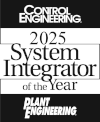
Pig Iron Caster Project Pours Hot Metal Ahead of Schedule
E Tech Group’s role shifted to that of a Main Automation Partner for a metals project with an ever-evolving scope of work. Our team effectively managed risks and delays, communicated changes promptly, and maintained a strict timeline, which ultimately enabled the client to complete the metal pouring process ahead of schedule.
The Project: Expand a Production Line to Meet Increased Steel Demand
A metal processing facility was developing a project to install a Pig Iron Caster with the goal of producing half a million tons of pig iron per year to meet rising demand and prices. They would be utilizing the existing blast furnace to feed this new installation, but would need to source the Pig Iron Caster, Bag House components and other heavy machinery, while simultaneously sourcing all required permits.
Once received and installed, the equipment would need to have all of the process control systems integrated and centralized through the control of an integrated HMI. This is where E Tech Group was called upon to function as what they had originally termed an “Umbrella Integrator”, helping bring all these disparate systems together and create a seamless user experience for field operators.
However, as with many control system expansions and upgrades, it quickly evolved into much more.
The Challenge: Overcome Supply Chain Delays & a Fast-Tracked Timeline
At a time when supply chain issues plagued most if not all industries, getting a single piece of machinery to install, test and move to the next as they would in front-end loading (FEL) wasn’t practical to maintain the identified timeline. So they pivoted to a fast-track approach.
Fast-tracking the automation system expansion meant we had less time to review and less engineering documentation available, as the pig caster and baghouse needed to be ordered in parallel. This approach, as opposed to the traditional, rigorous review process that preceded the ordering of any large equipment, meant ensuring minimal alterations during installation would pose a challenge, to say the least.
In order to best navigate the intersection of supply chain woes and a ticking clock, as construction began, it did so with limited and early design while detail engineering was still being drafted. This meant that extra care had to be taken with the early design to avoid any major disruption.
Due to the nature of the project, the schedule unavoidably continued to undergo incremental changes as potential challenges were identified… keeping all stakeholders up to date, open and constant communication was necessary to mitigate any delays. Thankfully, this type of communication is something E Tech Group brings to every automation project we undertake, so even in a constrained timeline and long waits on equipment, we were in our wheelhouse.
Changing Roles: From Umbrella Integrator to Hybrid Project Manager & Main Automation Partner
While E Tech Group was originally contracted to work within the role of an “Umbrella Integrator”, perpetually evolving project conditions would dictate that the team worked in a flexible role that transformed into more of a Hybrid Project Manager and Main Automation Partner.
Very early on, the client determined that the original plan for the critical ladle tilting component, controlling the pour rate of molten steel, would not work in its manual configuration. Our team worked quickly to create an automated solution for this piece that would allow it to function as required.
Recognizing E Tech Group’s ability to lead and problem solve, the team was asked to work in the interest of the client to not only complete what we were originally contracted but move the project forward to the finish.
The Solution: (Always) Go Above & Beyond for the Client
Control panel design should always be informed by the to-be operators; it ensures the client is able to take full advantage the advanced automation solution implemented by our team. Our automation engineers worked with all of the field operators to better understand their wants and needs. This helped develop the scope necessary in the creation and integration of the control solution they would all be using, ensuring it felt like one cohesive system.
Using the defined scope, the on-site team took points, evaluated and worked with the individual vendors. They then reviewed the vendor’s individual prints, programs and HMIs. The team also helped facilitate factory and site acceptance testing and provided onsite resources for other vendors for dry testing.
All of this fell outside of our original scope of work, but allowed the team to continue building trust with the client and functioning as a main automation partner for the length of this project.
The Result: Open Communication & Client Partnership Drove Success
Due to the nature of this project, the escalated timeline, supply chain issues, and shorter-than-normal lead time for engineering design, there were a number of changes that needed to be made. Our team was not only effective in quickly adapting in moving this project to the finish line but also in communicating changes in the timeline that would impact deliverables.
The client was truly appreciative of how the team and E Tech Group as a whole worked with them in helping make the best decision in the interest of the project while simultaneously executing and helping get them operational.
Pouring Metal Ahead of Schedule!
Because the team actively mitigated risk and delays, quickly communicated changes, and worked steadily to maintain this very escalated timeline, the client was able to pour metal almost a quarter ahead of schedule.
Our team truly performed outside their traditional scope of work, above expectation, and was there for the client from beginning to end. This is why they were asked to stay onsite and continue to help identify potential risks and opportunities. E Tech Group continues to mitigate unforeseen risks and help capitalize on opportunities that have yet to be unlocked in their machinery.

Overhauling a Botched Control System Upgrade for Warehouse Client
A fulfillment center needed to upgrade its obsolete system which was no longer operational. E Tech Group traveled onsite and overcame a multitude of challenges to get the client operational in their allotted timeframe.
The Project: Restructure a Down System Causing Delays & Disrupting Operations
An order fulfillment and warehousing client was facing significant challenges with an antiquated control system that was no longer operational causing them to fall behind schedule.
In an effort to bring it back online, they had previously engaged another automation services vendor, who had been working on the system for months without success. The client required the system to become operational urgently; further delays would keep them from meeting deadlines and impacting profitability. They turned to E Tech Group to expedite the commissioning process.
The Challenge: Limited Information & a Tight Timeline Leave No Room for Error
Attempting to pick up where another control system integrator left off isn’t the easiest, especially when any number of unknown variables can rear their heads at any time, as they did here. If not for the adaptability and diverse skill set of our automation team, they may not have been able to address and overcome those challenges.
- Limited Information and Timeframe: We were provided with only one week to study the current automation system, and the information available was limited, including the system’s description of operations and system rate.
- Lack of Equipment Design Information: No information regarding equipment design was presented, which made it challenging to understand all of the control system’s components.
- Limited Documentation: We were given some sample codes with minimal documentation, which made it difficult to understand and modify the existing codebase.
- Complex System Components: The system consisted of merges and a Print and Apply unit, adding complexity to the commissioning process.
- Absence of a System Checklist: There was no existing system checklist to guide the commissioning process.
The Solution: A Hands-On Approach Was Critical in Project Execution
Given the tight project timeline and the client’s immediate need, the engineering team decided to go onsite and commence development work directly at the location. This hands-on approach allowed us to overcome various challenges that could have manifested as delays:
- Addressing System Inconsistencies:
- Mechanical systems were found to be designed differently at different locations, requiring additional coding.
- The team needed to use the existing template, necessitating on-the-fly learning and adaptation.
- Inaccurate electrical wiring and layouts posed challenges that the team successfully addressed and resolved.
- Identifying Mechanical Inaccuracies:
- Correcting the placement of guard rails at scan points to ensure safety and functionality.
- Addressing issues related to non-uniform product conveyance within the system.
- Collaboration with Scanner Technicians: The team worked closely with scanner technicians, as the work they had performed previously was suboptimal. Multiple interactions were needed to resolve issues and ensure proper scanner functionality.
- Interconnections: Establishing interconnections with the upstream and downstream conveyors to ensure seamless material flow within the system.
- Checklist development: Due to the absence of an existing system checklist, the team created their own tailored checklist. This served as a fundamental tool in guiding their efforts during the system startup. It allowed them to break down the complex system into smaller, manageable sub-systems, ensuring a structured and efficient approach to the project.
The Results: Adapt, Overcome & Leave the Client With An Operational System:
Through the automation team’s presence onsite, expedited learning and development efforts, they successfully addressed the project challenges and got the upgraded control system up and running within the given timeframe. This achievement was a testament to the team’s adaptability, problem-solving skills and commitment to meeting the client’s urgent needs.
The client’s system is now and remains operational, meeting their immediate requirements and helping them avoid further delays. This project showcases E Tech Group’s ability to navigate complex and challenging scenarios to deliver results effectively and efficiently.
An efficient PLC and SCADA upgrade successfully minimized downtime, reduced costs, and improved the operational control of a tomato peeler system, enhancing product quality and competitiveness for a food manufacturer.
Challenge:
A prominent food manufacturing company specializing in tomato processing faced a significant challenge with their existing peeler system. The controls hardware was outdated, causing a higher risk of downtime, limited maintenance support, and poor controls performance and control network communications. The company needed to resolve these challenges and sought the support of E Tech Group. The food manufacturer chose E Tech Group for their proven track record and expertise in control systems, supporting a swift and successful automation project.
Solution:
The customer needed to upgrade their existing panel hardware for a modern EtherNet/IP control system. E Tech Group analyzed the customer’s existing system and provided the customer with a detailed plan to meet their specific needs of an upgraded system. This upgrade involved converting their existing Allen-Bradley PLC5 to the Rockwell Automation ControlLogix platform using the RSLogix 5000 programming environment. The customer also needed support connecting the ControlLogix platfrom to a new EtherNet/IP control network, converting several Powerflex VFDs with EtherNet/IP communications, and programming AVEVA HMIs and SCADA software for improved system visibility and real-time data monitoring. E Tech Group supported the system upgrade, retagging and remapping the existing logic to the new EtherNet/IP controlled hardware. The AVEVA HMIs and SCADA system were redesigned and programmed to provide the customer’s operators with better usability and improved access to critical data, ultimately enhancing their operational efficiency.
Results:
The project was completed on schedule, minimizing downtime. This led to significant cost savings as system failures were reduced. Improved control performance ensured smoother tomato peeler operations, enhancing the customer’s product quality. The enhanced system visibility enabled data-driven decisions and proactive issue resolution, reducing operational risks, and improving efficiency. Ultimately, this project supported the food manufacturer’s competitiveness in the market with a more modern control system.

Improving Efficiency & Safety on a Food Client’s Conveyor System
A food production and distribution facility was experiencing frequent jams and safety hazards with their conveyor system. E Tech Group assessed and upgraded the conveyor with an MDR, increasing output, efficiency and safety.
The Project: Fix the Feeding Jams in a Food Producer’s Conveyor System
The freezer outbound ASRS section in a food production and distribution facility is responsible for moving products in batches of 16×2 cases across two lines. However, the client’s current system lacked accumulation feeding to the robot responsible for palletizing the cases, leading to frequent jams and safety concerns for operators who had to clear these jams.
E Tech Group’s automation team provided an assessment of the current issue and recommended the replacement of the existing thirty-foot conveyor on both lanes with a lane MDR (Motorized Driven Roller) conveyor to improve control up to the merge point.
The Challenge: Complete a Conveyor System Upgrade Riddled with Limitations
The replacement of the MDR section as originally described sounded like a straightforward solution, as it was a complete replacement. However, once our team began configuring/mapping out the process automation solution, they began encountering a number of challenges during the detailed design phase:
Limited Mechanical Drawings:
- Limited Information: The client lacked comprehensive details about the existing system, leading to multiple measurement trips to gather essential information.
- Incorrect Conveyor Size: Initial measurements indicated a 30 ft length, but it was later determined to be 31.5 ft, necessitating a revision of our order.
- Clearance Issues: The new conveyor, at 25 inches wide, didn’t align with the existing 20-inch-wide conveyor, requiring a cost-effective alternative solution. The partial removal of the old conveyor prompted a reconsideration of our strategy.
- Belt-Driven Upstream Conveyor: Discovering that the belt we replaced powered an upstream diverging conveyor, we had to relocate the replacement motor, leading to additional unplanned work.
Limited Electrical Drawings
- The onsite team had to rely on the existing panel to locate the power source, as they had limited electrical drawings.
Limitations on Conveyor Hanging
- The client specified that the E Tech Group team could not add additional support to the ceiling in hanging the conveyor, which would need to be 22 ft high and as floor-supported as possible.
- The requirement to use floor supports rather than ceiling support posed an engineering challenge left to the E Tech Group team to determine how to effectively support this system.
New vs Old Conveyor Size
- As the team was required to use floor support, a height-adjustable system was needed to provide the alignment from the old to new conveyor dimensions.
The Solution: Roll with the Punches & Add an MDR
E Tech Group’s expert automation team brought their deep domain expertise in food and beverage production systems, along with their innovative and cooperative approach to project management, to tackle the myriad obstacles to this critical conveyor system upgrade:
Overcoming Mechanical Limitations
To address the mechanical challenges, the onsite team initiated a collaborative effort across multiple departments to develop an effective design solution. They worked diligently to address and solve:
- Mechanical Footprint Design: Due to limited mechanical drawings, the team relied on precise hand measurements to establish the system’s mechanical footprint, serving as the foundation for the design efforts.
- Load Support Design: The team designed load supports tailored to the product’s weight and dimensions to ensure efficient custom
- Bracket Fabrication: For handling different conveyor sizes, the team created specialized brackets fabricated at a local machine shop to meet project-specific requirements.
- Height Adjustment Design: To align conveyor heights without adding ceiling weight, the team engineered special brackets. These brackets were pivotal in achieving height adjustment and managing floor support effectively.
Implementation & Benefits
After a series of trips to refine the design solutions, the E Tech Group onsite team successfully implemented the proposed changes. Once the remaining variables were addressed, the implementation process went remarkably smoothly. The key enhancement to this system being the incorporation of MDR (Motorized Driven Roller) accumulation, which added significant value to the system.
The implementation phase involved the following steps:
- Assembly and Installation: With the refined design in place, our installation team worked diligently to assemble and install the newly designed components. This included fitting the custom brackets, load supports, and the MDR accumulation system.
- Testing and Quality Assurance: Rigorous testing and quality assurance procedures were carried out to ensure that the system operated efficiently and safely. We paid particular attention to the seamless integration of the MDR accumulation, which played a pivotal role in reducing the risk of jams and enhancing overall system performance.
- Operational Efficiency: The new design and components improved the system’s operational efficiency. The added MDR accumulation allowed for smoother product flow, eliminating the frequent jams that had previously posed a safety concern for operators.
- Enhanced Safety: The implementation not only resolved the mechanical challenges but also significantly enhanced safety conditions for operators. With the reduction in jam-related incidents, the need for operators to intervene and clear conveyors was significantly reduced.
The Result: More Safety, Increased Throughput, No Jams
Once the designed installation was complete and operational, the successful implementation of the solution brought about positive change in the system’s efficiency and safety, as anticipated, mainly through the introduction of MDR accumulation.
This project exemplified E Tech Group’s ability to overcome intricate challenges and deliver an innovative solution that improved both operations and workplace safety.

